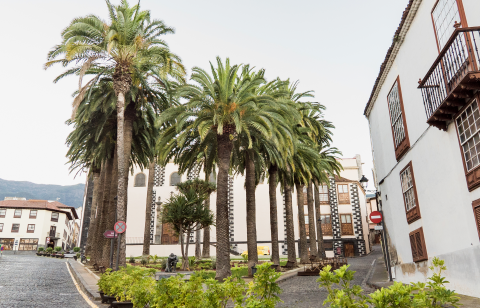7. Tribute to the Flower Carpet Maker Sculpture

After the steep hill, stop next to the Tribute to the Flower Carpet Maker sculpture, a popular photography spot for visitors to La Orotava.
The monument, constructed in 1997, shows a flower carpet artist placing flower petals. The flower carpet that he works on represents the outline of the first carpet, which established the tradition. The original copy is kept at the Monteverde house.
The current appearance of this square dates to the 19th century. It was also previously known as Plaza del Teatro or Plaza de las Monjas. From here, facing the church, look to your left to see the post office building. The entire block in which this building is located used to be the former convent of San Nicolás, which was inhabited by the Catalinas under the obedience of the Dominican priests. The convent, which dates back to the late 17th century, has been rebuilt several times due to frequent fires. It had different uses after the Spanish Confiscation. For a time, it housed the town’s first theatre, the Power Theatre, which was later a market. The cloister was occasionally used as a bullring. The current post office building was built on the site of the church.
Near the sculpture, at number 2 of the square, you’ll see the Machado House. The hut where Bishop Vicuña Zuazo died was located in the old gardens of this house. The bishop travelled to La Orotava during the earth tremors caused by the eruption of the Güímar volcano at the start of the 18th century.
At that time, it was customary for bishops to spend certain times of the year outside the Diocese, visiting villages to raise funds and attend to the needs of the parish. The journey from La Laguna to La Orotava took three days, which the bishop walked with a small entourage. When he started his trip, the earth tremors had not finished and his health was precarious. There was an increasing fear of death by crushing when he arrived at a temple that had almost been demolished, so he decided to stay in a hut next to the Concepción Church. However, the conditions in the hut accentuated his ailments and his health deteriorated until he died there a few weeks later.
Let’s continue up along the left side of this square until reaching Plaza Casañas with the Concepción Church.
